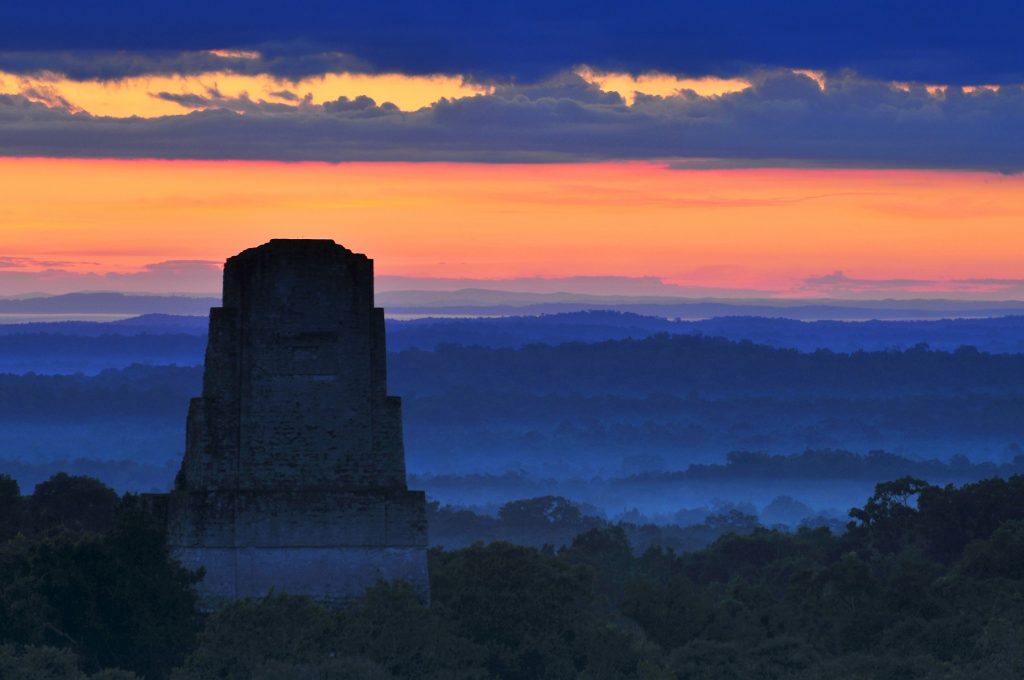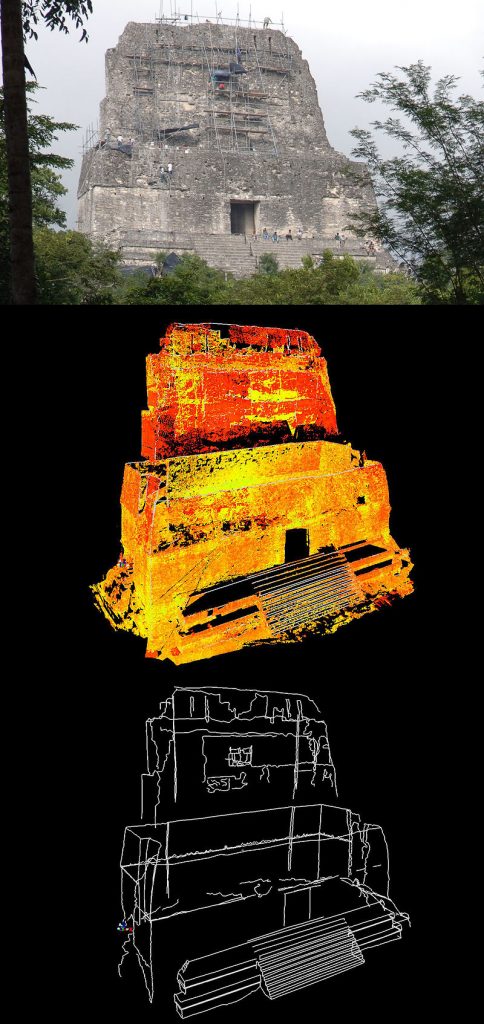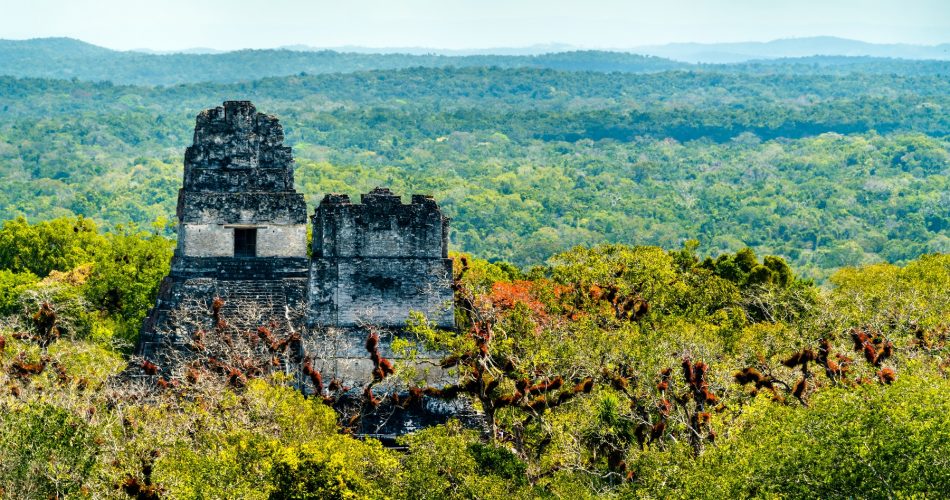- Thousands of structures were built in Tikal, but it is most famous for its pyramids.
- The tallest pyramid of Tikal is a structure known as Temple IV. This pyramid is not only the tallest pyramid in Tikal, but it is also regarded as one of the tallest and most voluminous buildings in the Maya world.
- Tikal has eight monuments that are pyramids or pyramidal in shape.
There are pyramids scattered across the entire world. For reasons we are not quite sure, countless ancient civilizations built striking, massive, and complex pyramids across the planet since at least 3,000 BC. Today, these pyramids number in the thousands and range in different sizes and designs. Welcome to Pyramidomania and our journey to explore one of the most voluminous structures ever built by the Maya, the Mesoamerican Pyramid Of Tikal, also known as Tikal Temple IV.
The ancient city of Tikal, located in present-day Guatemala was one of the most important ancient Maya urban centers and is now one of the most extensive archaeological sites in the Maya world. Located in the so-called Peten Basin, Tikal was a prominent ancient Maya capital of one of the most powerful ancient Maya Kingdoms. But even before the city became an important Maya center, great temples and pyramids were built on the site, probably at the beginning of the 4th century BC.
Archaeological surveys of the site revealed that the city covered an area larger than 16 square kilometers (6.2 sq mi) featuring more than 3,000 structures.
During the so-called Classical Period, between 200 and 900 CE, the city reached its peak and was one of the leading regional powers, with the kingdom dominating a vast area politically, military, and economically. Such was its importance that during the Classical Era, Tikal interacted with some of the greatest ancient cities of Mesoamerica like Teotihuacan and Cholula.
During the so-called Classical Period of the Maya, the pyramids of Teotihuacan and the Great Pyramid of Cholula—the largest, most voluminous pyramid on Earth—were already finished.

The interaction with distant cultures didn’t always result in positive outcomes for Tikal. Due to its regional importance and socioeconomic development, Tikal was an attractive city to other cultures who may have wanted the city for themselves. Archaeological evidence points to the fact that Tikal was conquered by the rulers of Teotihuacan sometime around the 4th century CE. Following what is known as the Classical Period, we see a decline take place at Tikal, and no new major monuments were built after this period. In fact, archaeological excavations of the temples and structures at Tikal point that many of the city’s structures were burned massively.
These events eventually led to the abandonment of Tikal, around the end of the 10th century. Prior to its abandonment, archeologists estimate that up to 90,000 people may have called the city their home. Evidence of habitation at the city can be traced back to the early Preclassic Period, spanning from around 2,000 BC to 200 AD. However, based on archaeological surveys of the wider area surrounding the city, archeologists estimate that within an area of 12 kilometers the total population of Tikal numbered around 120,000.
The tallest building in the Maya world
The Pyramid of Tikal—Temple IV—is thought to have been constructed around 740 AD, commemorating the reign of the 27th ruler of Tikal, Yik’in Chan K’awiil. However, there is a debate on whether the pyramid was built during or after his reign. Its purpose is unclear, but it may have served as either a show of power or as a funerary temple after the King’s death. Whatever the case, Temple IV is one of the tallest and most voluminous structures known in the Maya world.
The pyramid is regarded as the tallest pre-Columbian structure ever built in Mesoamerica (standing at around 70 meters), although scholars suggest that the Pyramid of the Sun at Teotihuacan may have been taller when it was completed. The exact tomb of Yik’in Chan K’awiil continues to elude experts, although some suggest it may be located somewhere beneath the temple.

The pyramid was built with a rectangular base with a long axis running north-south. The builders used an estimated 190,000 cubic meters (6,700,000 cu ft) of construction material to build the bulk of the pyramid. It stands around 65 meters above a supporting platform all the way to the roof comb seen in the image above. The architect in charge of Temple IV may have been the same who built Temples I and Temple II at Tikal, given their architectural similarity and design.
Temple IV is a kind of step pyramid: the structure consists of seven steps with slanting talud walls and various corners. The lowest parts have dimensions measuring 88 by 65 meters (289 by 213 ft). The uppermost parts of the pyramid measure 38.5 by 19.6 meters (126 by 64 ft).
As mentioned earlier, the pyramid sits atop a platform measuring 144 by 108 meters across (472 by 354 ft). This platform plays an essential role in the construction of the pyramid. It was built with two levels and rounded corners and was accessed by a wide stairway measuring around 44 meters (144 ft). The platform upon which the pyramid was eventually built is of great quality; the builders used massive stones to build it, ensuring the pyramid that was built atop would remain stable.
Although Temple IV is the tallest in Tikal and the May world, the city was home to many other pyramid temples. Thousands of structures have been excavated at Tikal throughout the years, but many more remain hidden. The most prominent structures are Tikal are a total of Six large pyramids, labeled by experts as Temples I—VI.
The pyramids at Tikal are unique, and support temple structures on their summits. Although the size of Tikal’s pyramids is impressive, and the ancient Maya used multi-ton blocks of stone to build some of them, archaeologists estimate that the pyramids were built in no more than a few years.
The pyramid labeled as Temple I is also known as the Temple of the Great Jaguar, and the structure is thought to have been a funerary pyramid dedicated to a ruler called Jasaw Chan K’awil. This pyramid was built with a height of 47 meters. Temple II is known as the Temple of the Mask and is smaller than Temple I, standing at 38 meters presently. Althoi8gh no tomb was found within the temple, it is thought to have been built around AD 700 in honor of the wife of Jasaw Chan K’awil. Temple I is Tikal’s most famous pyramid, and many people believe it is the largest structure at Tikal. However, Temple IV is the tallest and largest.

Temple III is known as the Temple of the Jaguar Priest. This structure is thought to have been the last of the great pyramids that were built at Tikal. This pyramid stands 55 meters (180 ft).
Temple IV is the tallest structure at Tikal, and in the Maya World. It honors the reign of Yik’in Chan Kawil. This is the largest pyramid built anywhere in the Maya region in the eighth century. It is also regarded as the tallest pre-Columbian structure in the Americas, despite the fact that Teotihuacan’s Great Pyramid of the Sun may have stood taller when it was completed. Some of the Pyramids at the ancient city of El Mirador may have also stood higher than Tikal’s Temple IV.
Temple V is the second-tallest pyramid at Tikal and was built honoring a yet unidentified ruler. It stands 57-meters tall and was most likely built sometime around 760 AD.
Temple VI is a pyramid also known as the Temple of the Inscriptions. Thought to have been completed around 766 AD.
Temple 33 is another pyramid at Tikal located in the Northern parts of the Acropolis. The pyramid stands 33 meters tall.
Structure 34 is another pyramid at Tikal, and was probably built over the tomb of a ruler called Yax Nuun Ayiin I. The pyramid was topped by a three-chambered shrine, with rooms situated one behind the other.

